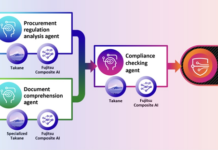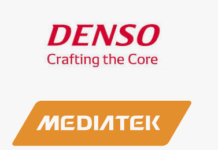When you hold your smartphone, drive your car, or even switch on your smart TV, there’s an invisible heartbeat inside, semiconductors. These tiny chips power satellites in orbit, fighter jets in the skies, and the AI algorithms reshaping our lives. For years, India has depended on importing these critical components, an Achilles’ heel for a country that aspires to be a global tech leader. But the tide is turning. With billion-dollar investments, government incentives, and, most importantly, a young pool of engineers, India is poised to script a new chapter: becoming a semiconductor innovation powerhouse.
Yet, there’s a catch. Money can build fabs and policy can set direction, but without the right skills, the vision will remain half-written. The future of India’s semiconductor journey will not just be about silicon, it will be about skills.
The Opportunity Before India
The global semiconductor industry is racing towards a trillion-dollar valuation by 2030. India’s own market is expected to touch $64 billion by 2026, nearly three times its 2019 size of $22.7 billion, according to Counterpoint Research and the India Electronics & Semiconductor Association (IESA). At the same time, the Electronics Sector Skills Council of India (ESSCI) projects the industry will employ 1.70 lakh professionals by 2025 and create another 1.03 lakh jobs by 2030. These are not routine jobs, they’re high-paying, future-facing roles that will place young Indians at the cutting edge of global innovation.
India already has an edge: it is home to nearly 20% of the world’s chip design engineers. Leading companies have set up design and R&D centers in Bengaluru, Hyderabad, and Noida. The recent unveiling of a 3nm semiconductor chip designed in India showcased the sheer technical capability of our engineers and the strategic importance of Indian design centers to the global industry.
By August 2025, the Union Cabinet of India had approved a total of ten semiconductor projects under the India Semiconductor Mission (ISM), amounting to cumulative investments of approximately ₹1.6 lakh crore (around $18.2 billion) across six states. These projects cover a range of technologies and partners, including advanced fabs, packaging, and silicon carbide-based compound semiconductors.
Why Skilling is the Decisive Factor
Despite this progress, the semiconductor value chain is highly talent-intensive. The design and IP creation phase, where the most economic value resides, requires deep expertise in VLSI (Very-Large-Scale Integration), electronic design automation (EDA) tools, and system-on-chip (SoC) architecture.
Currently, India produces tens of thousands of electronics graduates every year, but only a fraction are industry-ready. The gap lies in practical exposure, specialized training, and familiarity with real-world tools. For India to move beyond being a service center and emerge as a global innovation leader, a sharper focus on semiconductor design and VLSI roles is essential.
Equally critical is the manufacturing side of semiconductors, which demands not just technical know-how but also safety and operational excellence. Specialized programs such as Industrial Safety for Semiconductor Manufacturing – Hazchem and Electrical Safety in Semiconductor Facilities are vital to prepare a workforce capable of managing the highly sensitive and hazardous environments of fabrication plants. By strengthening both design expertise and manufacturing readiness, India can build a holistic talent pipeline for the semiconductor ecosystem.
Role of ESSCI: Building the Skills Bridge
This is where ESSCI plays a transformative role. Recognizing the talent gap, ESSCI has developed 32 NSQF-aligned qualifications spanning the entire semiconductor ecosystem, from chip design to advanced packaging, cleanroom operations to safety protocols.
The courses are designed to cater to:
- Engineering graduates looking to specialize,
- Diploma and ITI students preparing to enter the workforce, and
- Professionals seeking to upskill or switch domains.
Some of the most critical roles where demand is already soaring include:
- VLSI Design Engineers – Designing advanced digital and analog circuits at nanoscale.
- Physical Design Engineers – Specializing in floor-planning, power optimization, and timing.
- Verification Engineers – Ensuring chips are error-free before fabrication.
- Analog & Mixed-Signal Designers – Vital for sensors, RF communication, and power management.
- Wafer Processing and Packaging Engineers – Especially relevant as fabs emerge in India.
Each of these roles commands global relevance and premium salaries, but only if the workforce is trained at world-class standards. The full range of programs is available on ESSCI’s website, offering aspirants a structured path to join the semiconductor workforce. Beyond curriculum design, ESSCI collaborates with industry leadersensuring that Indian talent is benchmarked against international standards.
Why This Matters for Young Engineers
For India’s youth, the semiconductor wave represents more than jobs, it represents a chance to lead global technological change. Whether in AI, electric vehicles, 5G, space technology, or IoT, semiconductors are at the heart of every emerging sector.
A career in this industry offers:
- High-paying roles with global exposure,
- Opportunities to work on frontier technologies, and
- The satisfaction of contributing to national self-reliance and global leadership.
Conclusion:
India’s semiconductor journey has moved from dream to execution. Fabs are being built, policies are in place, and global players are betting big on India. But without a deeply skilled workforce, the dream of becoming a global semiconductor hub risks falling short.
The responsibility now lies with all stakeholders, universities, industry, government, and skill councils like ESSCI, to align efforts and ensure our engineers are not just employable, but world-class innovators.
For young Indians, the message is simple: this is your moment. Equip yourself with the right skills, embrace the semiconductor revolution, and help India design not just chips, but its future.
Because if we skill right, India won’t just participate in semiconductor innovation, it will lead it.


















